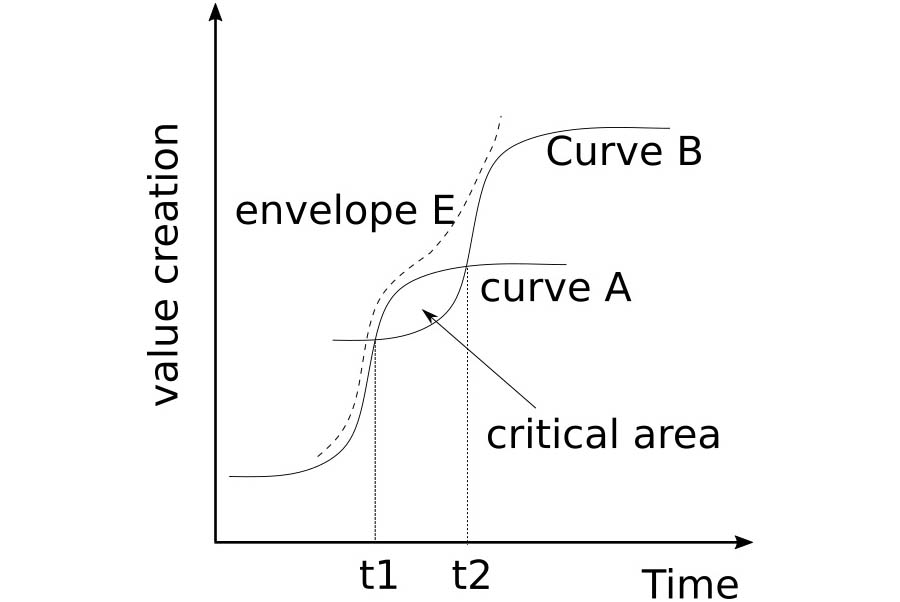Information and Technology Governance, Now and Future
A viable system can survive changing environments
“We begin by trying to understand what is special about today’s managerial problems. There does seem to be something unique and it has to do with the rate of change. It could be that the lags in our systems of implementation are longer than the average interval of new technological impacts – if so there is bound to be trouble.”
--Stafford Beer, Brain of the firm, 2nd edition, 1981

On August 7, 2019, British Airways (BA) experienced an IT system failure. Passengers had to use manual systems for check-in, which resulted in long delays, and might cost the airline £8 million.
IT failure is not new and takes many forms. In 2013, a national £9.8 billion IT program in the UK National Health Service could only deliver £3.7 billion benefits. In fact, IT projects failure rate can be as high as 30%.
Today, industries are navigating unprecedented digital transformation. Information and Technology (I&T) have become determinants of success. To reduce failure rate, I&T governance is needed to generate values for the business. In many aspects, a viable system model (VSM) for organization can be explored as the basis for I&T governance to cover not only IT but all technology and information processing to achieve organization goals.
A viable system is an adaptive system that can survive in a changing environment. To be viable, I&T governance could be defined as a system by which the current and future use of I&T are controlled to create values for organizations.

Functional roles of I&T governance could be demonstrated in Figure 1, where y axis represents value creation, and x axis represents time. Technology curves are characterized by sigmoid functions. The curves are purposely aligned with business goals to optimize value creation, meaning maximal benefits with minimal risks, given resources. The shapes and positions of the curves are controlled by I&T governance. Curve A represents current I&T, curve B represents future I&T. The envelope E is determined by business goals. Time t1 is now, and t2 is a time point in the future. Decisions have to be made at time t1, based on knowledge learned before it, and things after t1 are unknown.
If we know that curve B is going to dominate our industry and at future time t2 will overtake curve A, then we could make a decision now. The business will succeed or fail depending on I&T governance. First it has to identify a correct curve B, and then investing in it at the right moment. To keep benefit of curve A between time t1 and t2, a mixed investment in both A and B (critical area) is preferred for a smooth transition.
To predict the future, we need a model. Conant Ashby theorem states that "under very broad conditions, that any regulator that is maximally both successful and simple must be isomorphic with the system being regulated. (The exact assumptions are given.) Making a model is thus necessary.”
Enterprise doesn’t exist in a vacuum, and depends on innovative I&T to be successful. I&T is constrained by business goals, and can’t be innovative arbitrarily. I&T governance must learn its business environment and industrial trend to form a model of both, like “the living brain, so far as it is to be successful and efficient as a regulator for survival, must proceed, in learning, by the formation of a model (or models) of its environment” (Conant and Ashby). Many I&T projects failed because they failed to identify correct technologies, or have little knowledge of the business process to align with it. I&T governance must have goals and its goals must align with enterprise goals (policy and intelligence in VSM).
To ensure smooth transition from curve A to curve B in Figure 1, I&T governance must have requisite variety. Whenever there is a change, there is resistance to it. Ashby’s law of requisite variety states that “To put it more picturesquely: only variety in R can force down the variety due to D; variety can destroy variety.” Transition from now (curve A) to future (curve B) is a homeostatic process (envelope E). In case there is residual variety of A against the process, requisite variety in I&T governance can act on it promptly. Many I&T projects failed because the resources were allocated to wrong directions, or allocated at wrong times. Conflicts in competing for the same resources within an organization must be resolved by prioritizing goals through centralized management (coordination in VSM).
As we know it, VSM is recursive. So is I&T governance. It is a system and a team work, not one individual, and everyone contributes to it. However, the requisite variety from top levels have to be amplified down to the bottom, chain of command. Many I&T projects failed because of resistance caused by groupthink. Proper communications and enforced control are necessary conditions for complex projects (minoring and control in VSM).
Media industry is now in a very challenging environment. Technologies such as hybrid cloud, artificial intelligence, internet of things, and 5G will be indispensable in future. Smart TV and smart phones will continue to proliferate. Traditional one way broadcasting with fixed schedules to fixed locations is no longer sufficient for content distribution. 5G can offer needed capacities to distribute the content interactively and on demand to any devices connected to it.
Currently, 10^21 digital bits of information are being produced annually (there are approximately 10^22 -10^24 stars in the Universe). Unfortunately, they are not fully utilized. In-depth data analysis of media content can provide insights for content creation, optimize production process, and innovate high quality services. On the other hand, vast amounts of user service data is generated in the consuming process of watching, listening, interacting and sharing media content. Analysis of these big data can better reveal the user's needs and hobbies, enable us to push personalized content with precision targeting, and improve the quality of experience. Cloud computing and artificial intelligence are required for big data analysis.
Clearly, I&T are the backbone of media organizations. Its failures disrupt normal business processes, and indicate inadequacies in I&T governance. A metric of performance is therefore needed. Strafford Beer defined it as a ratio of what we are doing now to what we ought to be doing (for the future). A viable organization should always keep an eye on the future and jump the curve at the right time to innovate.
Broadcasting & Cable Newsletter
The smarter way to stay on top of broadcasting and cable industry. Sign up below
Ling Ling Sun is chief technology officer at Nebraska Public Media.
